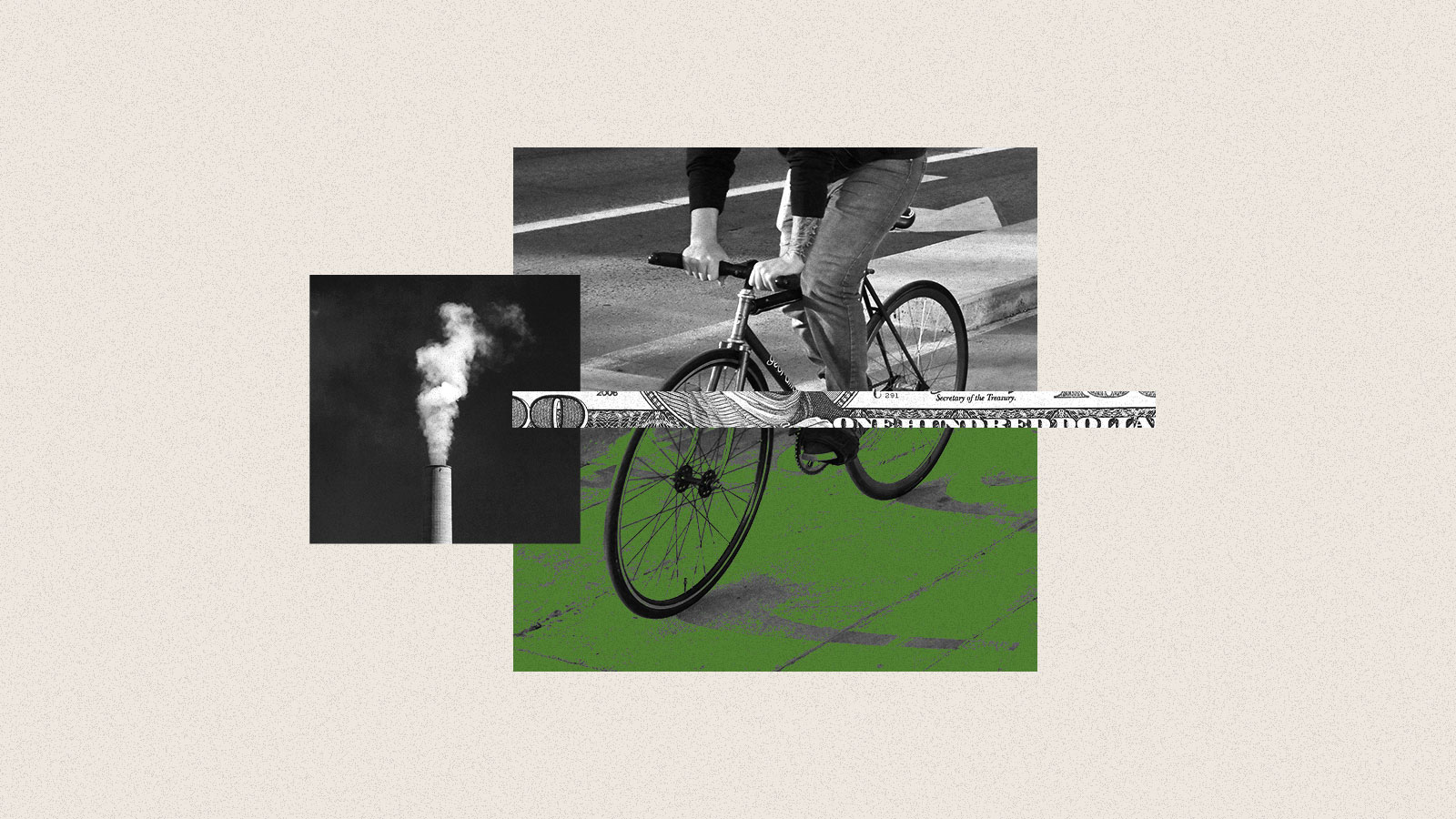The Department of Transportation has ordered a review of federal funding for bike lanes and plans to target recent projects that “improve the condition for environmental justice communities or actively reduce greenhouse gas emissions.”
The move, outlined in a department memo obtained by Grist, is part of the Trump administration’s broader goal of steering federal infrastructure spending toward fossil fuels. The restriction of federal funding comes as health experts warn that pedestrian deaths have surged.
DOT officials did not respond to requests for comment.
The undated memo, reportedly sent March 11 to DOT offices, ordered an immediate freeze on all grants made after January 2021, invoking a series of executive orders aimed at dismantling federal diversity and climate initiatives. It instructs agency employees to identify projects that provide “funding to advance climate, equity, and other priorities counter to the Administration’s executive orders.”
It specifically targets any funds for projects “whose primary purpose is bicycle infrastructure,” one of many steps President Donald Trump has taken to boost the fossil fuel industry. It also calls for flagging projects that might prioritize benefits to disadvantaged communities or reduce emissions. This likely includes hundreds of grants awarded through Safe Streets and Roads for All, a $5 billion initiative created by the Infrastructure Investment and Jobs Act. The goal of these efforts is to help communities address roadway safety concerns, said John Tallmadge, the executive director of Bike Durham, a nonprofit group in Durham, North Carolina. The group is supporting a series of infrastructure improvements in Durham that were counting on funding from the agency’s BUILD grants, also expected to be impacted.
The Durham project would add sidewalks, crosswalks, and bus stops to the city’s busiest transit corridor, which is used by thousands of people each day. “Numerous locations along this corridor have had pedestrian fatalities,” Tallmadge said.
These safety concerns were highlighted in a recent report by the Centers for Disease Control and Prevention, which found Americans were 50 percent more likely to die walking in 2022 than in 2013. Its author, Rebecca Naumann, said infrastructure that prioritizes safety over speed — like the improvements Durham hopes to build — are proven solutions that protect everyone.
She notes such designs have helped other high-income countries, like the United Kingdom, Australia, and Canada, reduce traffic deaths in recent decades. The opposite is true of the United States, which as of 2022, saw more pedestrian deaths than any of the 27 other countries Naumann studied.
One DOT project manager, who requested anonymity to avoid professional retaliation, told Grist the memo and executive orders will make it “terribly difficult to use federal transportation dollars where it’s needed most.” That’s bad news for more than bike lanes: Sustainable transportation not only makes communities safer, it lowers travel costs; improves access to important services like medical care, schools, and work; and helps mitigate climate change. “It’s frustrating to see these solutions stall when so many communities urgently need them,” he said. As Tallmadge noted, delays and revisions to federal grants will increase the cost of any project — the opposite of government efficiency.
Other funding likely to be caught up in these restrictions include projects within the Active Transportation Infrastructure Investment Program, which supports multimodal travel; the BUILD program, which is designed to meet local or multi-jurisdictional needs; and the Reconnecting Communities Pilot Program, which helps communities harmed by past transportation decisions. Grants recently awarded under these initiatives range from $22 million for electric buses in Rhode Island to $157 million for green spaces that connect Atlanta neighborhoods currently divided by highways. “The restriction of funding for projects like the Atlanta BeltLine and its RAISE Grant is an assault on disadvantaged communities,” said U.S. Representative Nikema Williams, the Democrat who represents a wide swath of Atlanta. “These projects improve equity and mobility while spurring economic development.”
The DOT memo follows recommendations outlined in the conservative Project 2025 policy agenda that has shaped much of the Trump administration’s work. It broadly argued that the federal government should not fund local transportation projects. Instead, it suggests “user fees” and enabling “private companies to charge for transportation” through ventures like toll roads, removing air pollution regulations, restricting electric vehicle infrastructure, and eliminating federal funding for bicycle lanes, ferries, and other transportation.
Yet the move to restrict programs like BUILD, which rely on community input, clashes with Project 2025’s emphasis on local decision-making, said Caron Whitaker, the deputy executive director of the League of American Bicyclists. The Atlanta BeltLine project, for example, was supported by private and public entities at almost every level of government in Georgia. “Why are we pulling back grants where local governments choose what they want to do?” Whitaker asked. “If safety is a federal issue, then local fatalities matter,” she added. “If the economy is a federal issue, then local economies matter.”
The League, which is circulating a petition protesting the DOT’s review, recently led meetings with congressional aides to discuss the importance of funding active transportation projects. One former DOT employee who spoke to Grist said the scale of Safe Streets and Roads for All means there will be widespread impacts. “Safety is a bipartisan issue. You see Republican and Democratic representatives and senators touting the announcement whenever they’re awarded,” he said. “I think people just think, ‘Oh, this probably just hurts the coasts and the big cities,’ but there’s definitely rural areas that were trying to improve safety.”
It takes a lot of work for communities to get a federal grant, he said, often alongside finding matching funds. Whitaker agreed. “It puts local governments in a tough position,” she said. Because the Safe Streets program funding was congressionally allocated, explicitly including “bicyclists,” Duffy’s move to cut programs “whose primary purpose is bicycling” may not even be legal. Last week, a coalition of nonprofits and cities sued to reverse the federal freeze on grants, including the March DOT memo. “Since our nation’s founding, the Constitution has made it clear,” wrote the Southern Environmental Law Center, who is litigating the case, that “Congress controls federal spending — not the president.”
These efforts may limit transportation research nationwide. The DOT funds research and technical assistance projects through the National Cooperative Highway Research Program, or NCHRP, which is also subject to review. “If the policy memo is applied broadly to NCHRP, there could be a significant loss in current and future funding,” said Jennifer Dill, director of the Transportation Research and Education Center. “Without more research about countermeasures and solutions to fatalities, it will be hard to reverse that trend.” She worries Duffy’s recent actions will limit states’ ability to effectively use federal money for local priorities.
At headquarters, morale among many of those remaining at the DOT is at new lows. At first, the DOT project manager who spoke to Grist hoped to come up with ways to rephrase grants to avoid triggering words like “equity” and “climate.” But the new restrictions have escalated into an unprecedented level of scrutiny, with the political appointees reviewing every contract.
“It’s gone beyond just switching words to get through the censor,” he said. “It’s not only making people afraid to carry on with good work that was underway, but has a chilling effect on everything we do going forward.”


